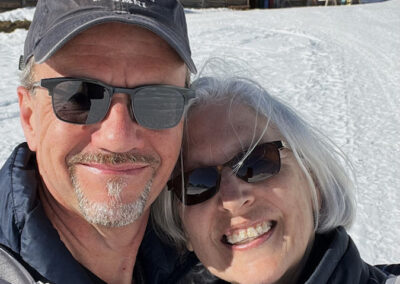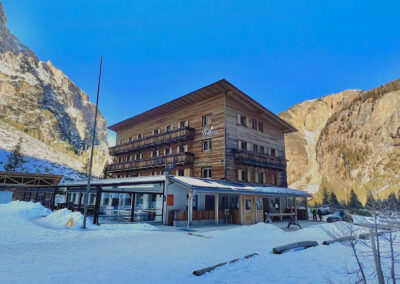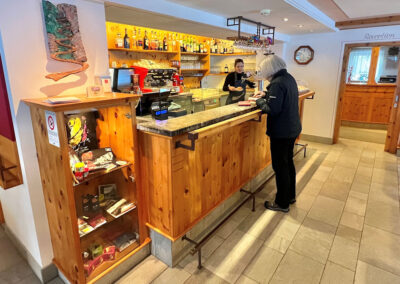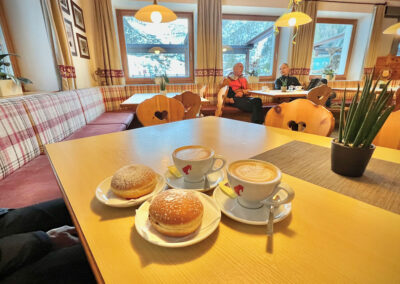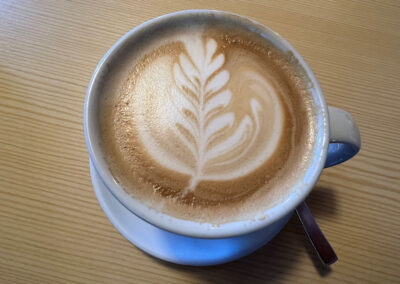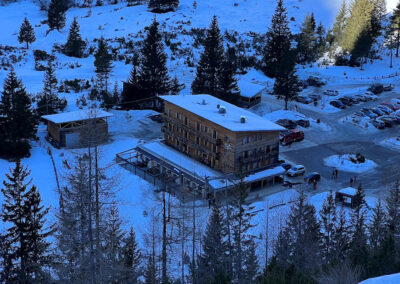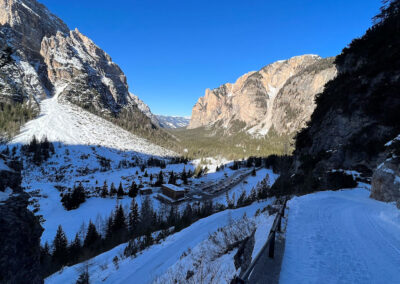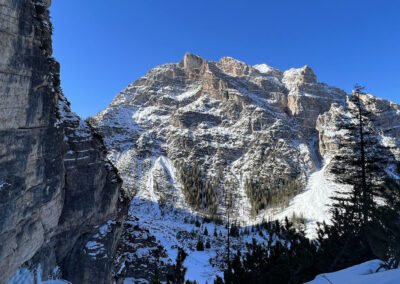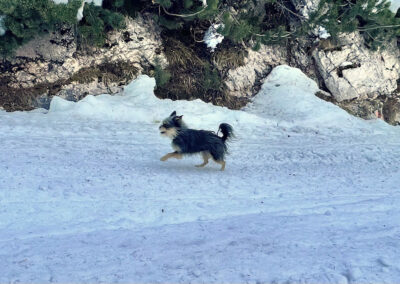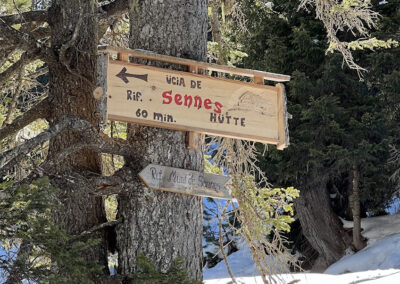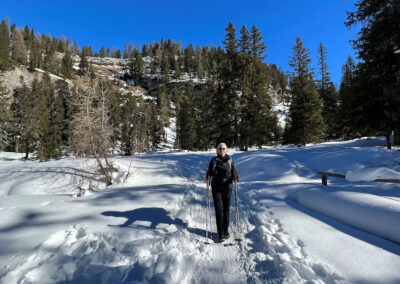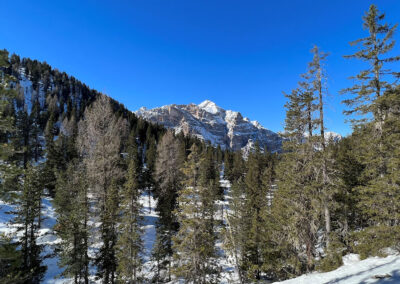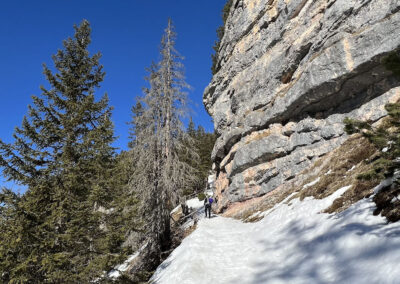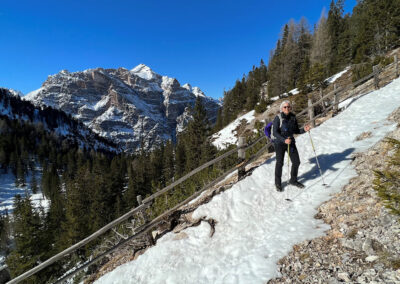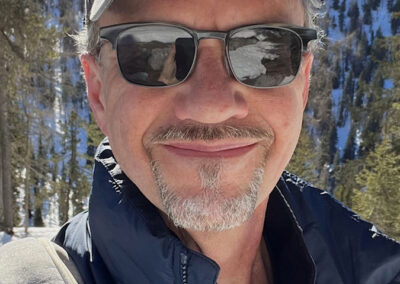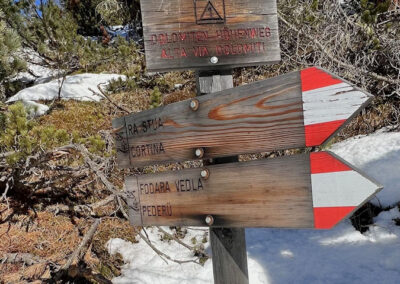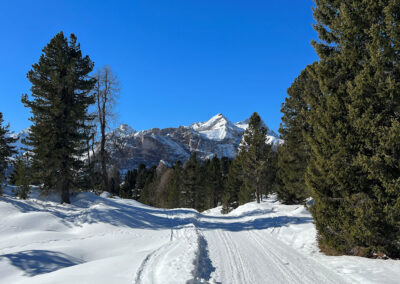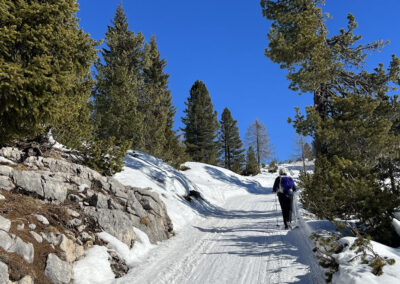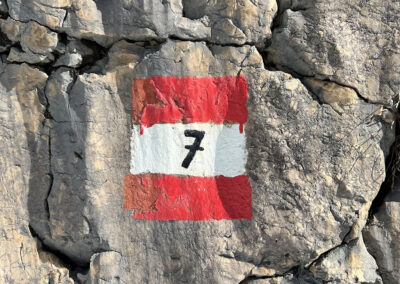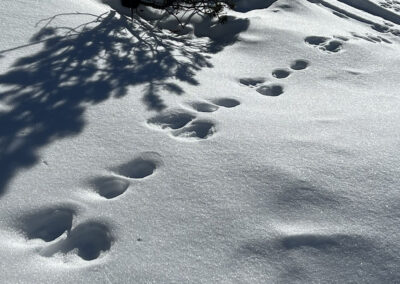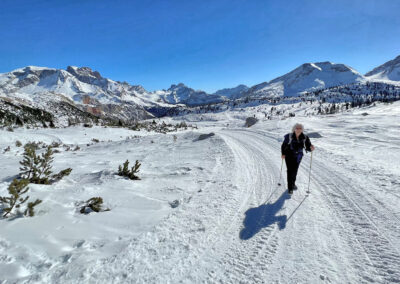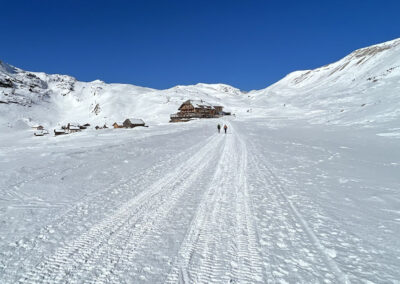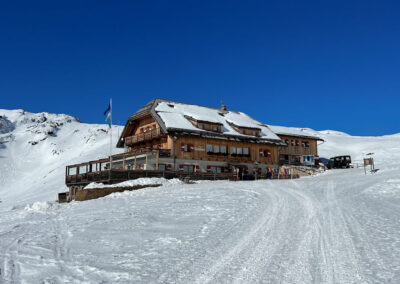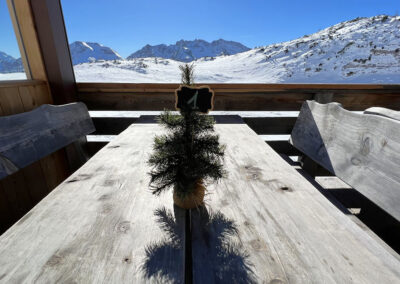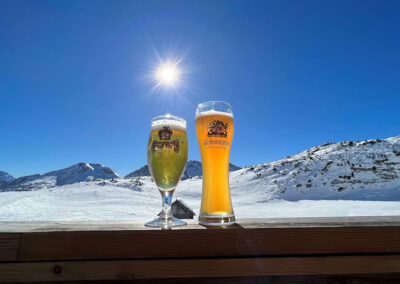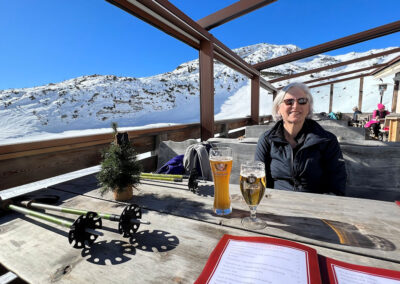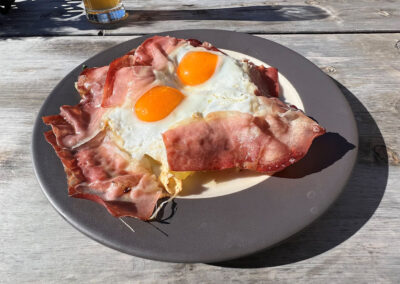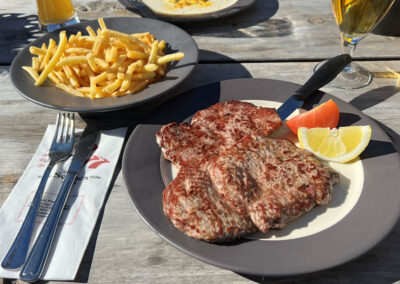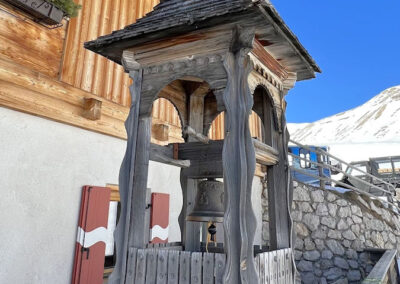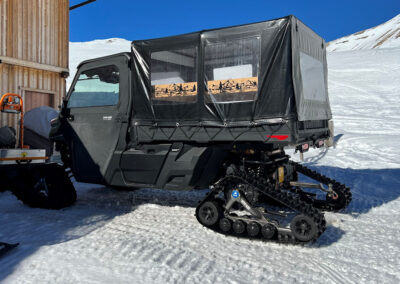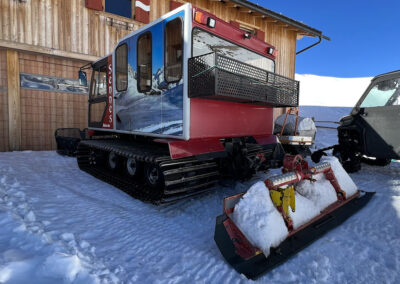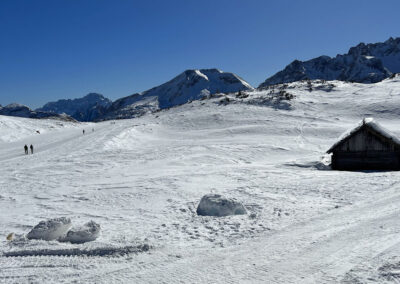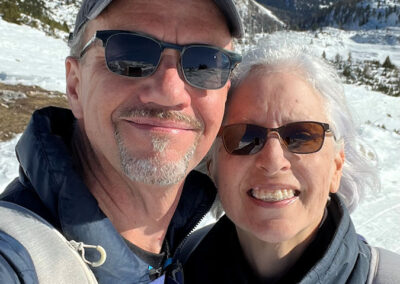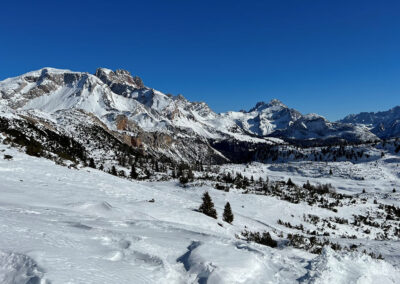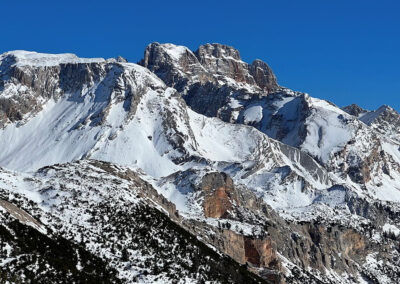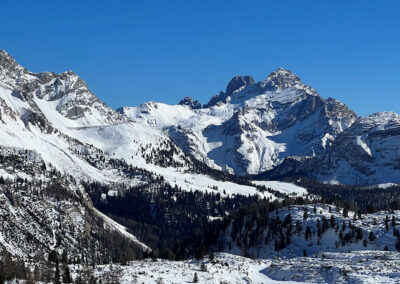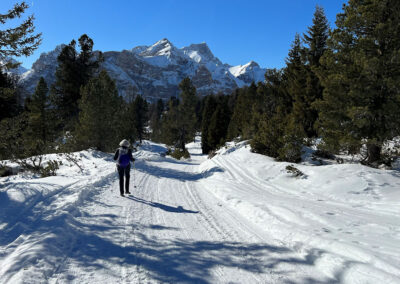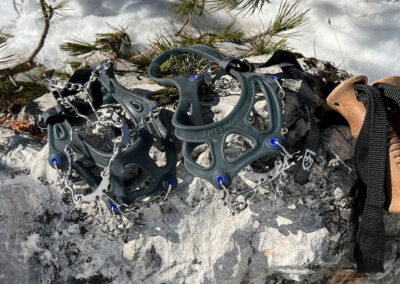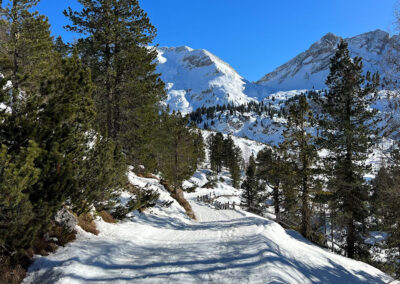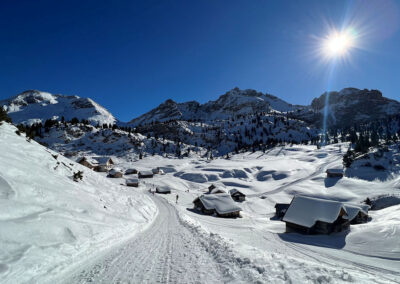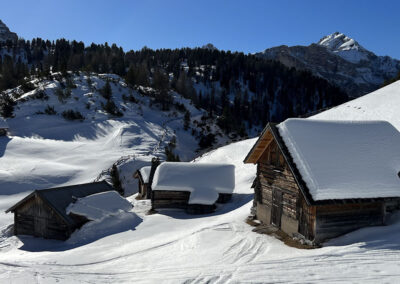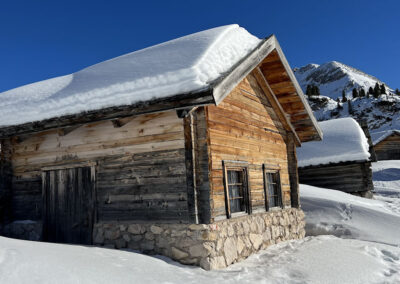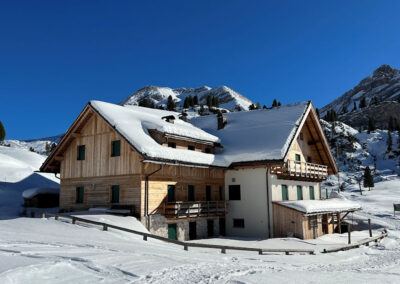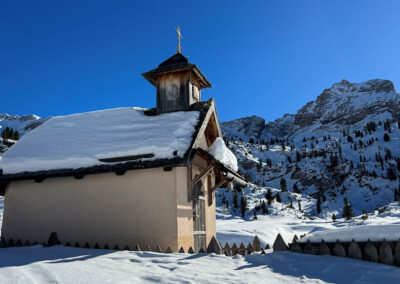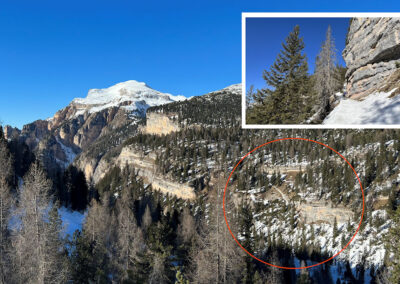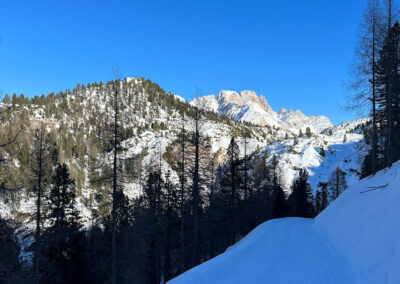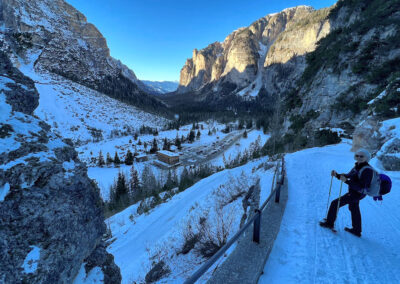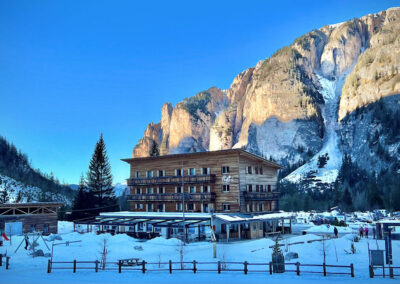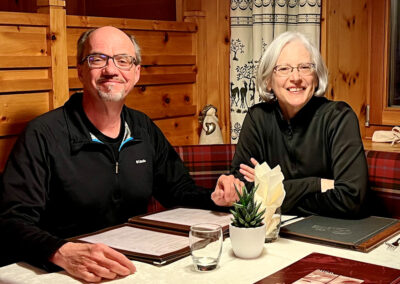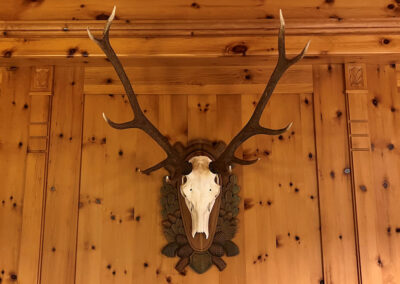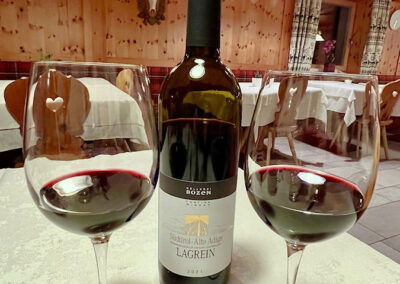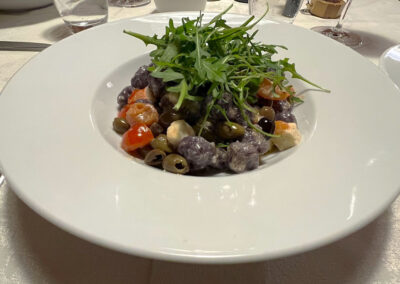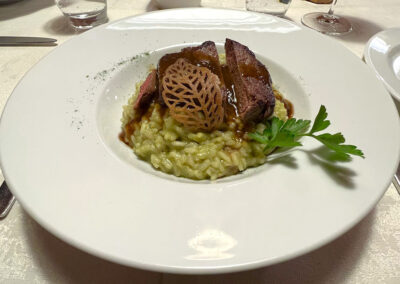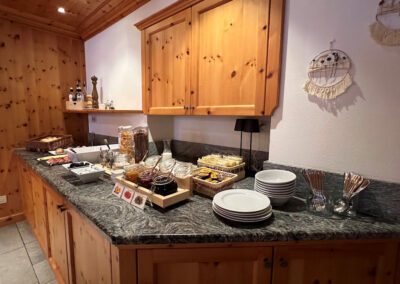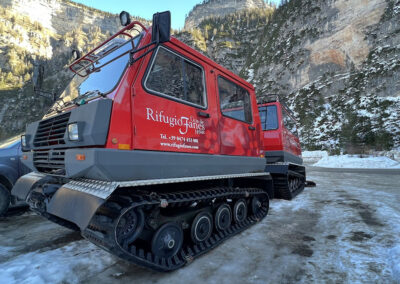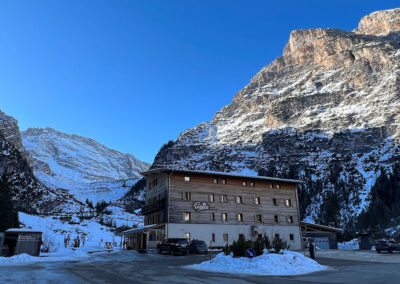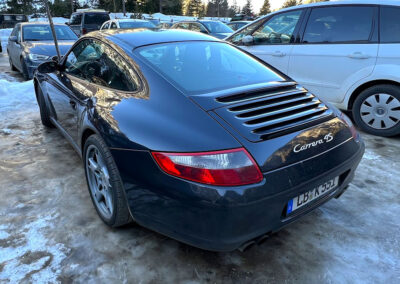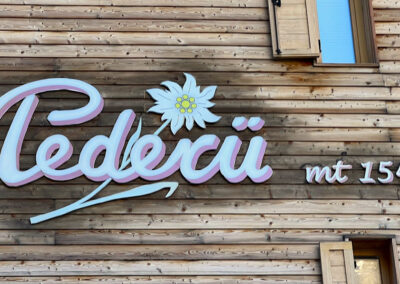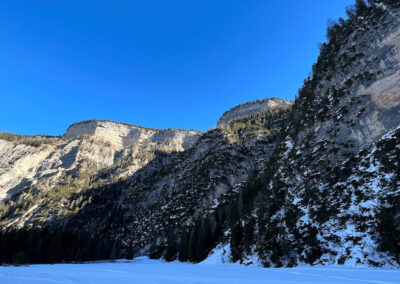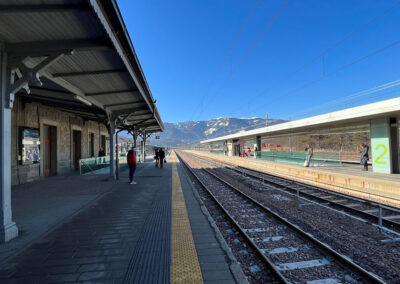Day 10 & 11 – The Sennes Hütte Adventure
Today’s Adventure
On Tuesday and Wednesday Cindy and I made an overnight getaway to the Val dai Tamersc, a lovely valley running southeast from San Vigilio di Marebbe, a small resort town accessible from the Val Badia. Still lost? Don’t feel bad as this is some very remote terrain buried deep in the Dolomites.
We left Innichen fairly early on a train that took us west to St. Lorenzen where we boarded a bus for the ride south into the Val Badia. At a wide spot in the road called Zwischenwasser we caught a small airport-sized shuttle for another 10 miles southeast through San Vigilio di Marebbe to the far end of the Val dai Tamersc. We had overnight reservations at a mountain lodged located there called the Berggasthaus Pederü (https://www.pederue.it/en).
Pederü is a family-run mountain rifugio resting at just under a mile above sea level and quite a bit below the surrounding peaks. The structure dates to the First World War when this area served as a military camp for the Austrian Kaiserjäger (literally the “Emperor’s Hunters”) and the hut served as the barracks for the officers. After World War the wooden hut went through a series of expansions and modernizations that transformed Pederü into the charming place that it is today.
After dropping our overnight bag behind the desk at Pederü and refueling on cappuccino we headed out, or perhaps more accurately we headed *up* for our hike. The trail started out on an old military road with a brutal series of nine hairpin turns that climbed roughly 500 feet in not much over a quarter of a mile. The 26% grade on this initial stretch is arguably some of the steepest roadway in the Alps. The really bad news is that even after conquering the switchbacks our climb for the day was not over. By the time we returned to Pederü late in the afternoon we would have recorded over 2,200 feet of vertical in 6.8 miles, over half of this wearing much-needed ice cleats.
After about 3-1/2 miles of uphill fun we finally reached the Sennes Hütte (https://www.sennes.com/en) around 12 Noon. Sennes is a family-run mountain rifugio that was built in the late 1930’s but has been significantly updated and expanded over the years. Sennes lies at around 7,000 feet above sea level at one end of an unusually large and flat cirque that enjoys a wide panorama over some of the most beautiful peaks in the Dolomites. The jeep trail to access Sennes (what is the basis for today’s winter hiking trail) was not added until 1960’s, the same decade that running water and even a short runway were added by the military.
The restaurant at the Sennes Hutte was not overly crowded and we had our pick of tables on the sun terrace when we arrived. We chose a corner table tucked up next to a plexiglass windscreen that gave us great views of the surrounding terrain. Cindy ordered my usual hiker’s lunch of two fried eggs, speck, and Röstkartoffeln as she had not yet ordered that this trip. I ordered the steak frites, which included two very nice slices of beef cooked a perfect mid-rare. We were quite impressed with both the quality and the value of the meal given that everything served had to come up the arduous trail from Pederü by snowmobile or tracked vehicle.
After finishing our lunch at the Sennes Hütte on Tuesday we geared up and started our hike back down to Pederü. The sun was still intensely bright and the temperature was climbing into the upper 30’s, even up at 7,000 feet above sea level. This meant that the trail was getting a bit sloppy underfoot and quite slippery in places while those sections still in the shade remained frozen and icy. It wasn’t long before we put on our ice cleats to help ensure our safety during the descent.
At about the halfway point of our return we decided to take a slight detour from our uphill route. A marked branch of the trail took us over to see the Rifugio Fodara Vedla (https://www.fodara.it/en) and its collection of farm buildings, something that we’d seen in several of the YouTube videos that we had viewed while planning our exploration of this area. These buildings were all boarded up for the winter during our passage, but once their summer season starts in late May this becomes a popular mountain getaway for families and a great stopover for hikers on the Alta Via.
As we left the Rifugio Fodara Vedla the alternate trail gave us an opportunity to see one of the really steep sections of trail that we had climbed earlier in the day. Be sure to look at the photo in today’s collection that shows what this trail section looked like both from across the valley and in person as we climbed it.
The alternate trail rejoined the original uphill route just above the dreaded switchbacks. The navigation of the switchbacks took almost as much energy and probably more concentration than climbing it in the first place due to the deteriorating snow and ice surface. By the time we made it back to the Berggasthaus Pederü we had covered 6.8 miles, spent 3:52 on the trail, and logged 2,228 feet of vertical.
We arrived back at the Berggasthaus Pederü (https://www.pederue.it/en) and checked in with just enough time to catch a much-needed nap under the down-filled duvets before dinner was scheduled to start. We had a lovely and modern corner room with a balcony and nice views of the valley. Pederü offers all kinds of lodging options including single, double, and triple rooms with private baths. They also have a dormitory space on the top floor with bunks to accommodate the large number of hikers passing by in the warmer months on the Alta Via 1, one of a series of north/south high altitude trails through the Dolomites. Think ‘Appalachian Trail’ on a smaller scale, but with better places to eat, drink, and sleep.
Pederü has a half-board option for stays over three nights, but since we were only there for a single night we simply ordered dinner off of their menu. This actually works out better given Stuart’s food allergies as it gives us more options. Cindy ordered the herb risotto served with a grilled venison cutlet. I decided on the purple potato gnocchi with olives, tomatoes, feta, and olive oil. I also took advantage of the option to add a grilled venison cutlet on the side. We enjoyed a nice bottle of Lagrein to pair with the venison. Lagrein is a full-bodied red wine made from grapes that are native to the southern part of the Südtirol, most commonly the area around the capital city of Bolzano.
We had a very quiet dinner and a peaceful evening in the hotel as there were only three rooms occupied by a total of five guests. Given the low census the availability of a full menu at dinner was much appreciated. We were told that during the hiking season when the Alta Via 1 was busy they were typically full to capacity so the much slower winter off-season was a welcome change for the owners and staff.
Our breakfast the next morning was a typical buffet as found in just about any German/Austrian/Swiss hotel. This included cold cuts, cheeses, and a variety of bread and rolls. There was also a selection of muesli and cereals with fruit and yogurt. Espresso and cappuccino were made to order for us in the bar. Ordinarily they would have had their automated touch-screen self-service coffee machine in operation but with so few guests it was just easier for them to use the bar as it was already cranking out caffeine for the non-hotel customers that were starting to arrive for their day of hiking or skiing.
We had planned another hike in the area for this morning but after the big day yesterday we decided that it would be best to save that particular hike for another time and head back to Innichen. We caught the 10:00 AM shuttle and by lunchtime were back at our apartment in Innichen where we enjoyed a much needed afternoon of rest.
For Innichen’s main page click here.
For Castelrotto’s main page click here.
For the entire trip’s main page click here.
Today’s Maps
Hiking Log
6.8 Total Miles
2228′ Cumulative Vertical
3:52 Time On Trail
The Meals
Breakfast : Berggasthaus Pederü
Lunch : Sennes Hütte
Dinner : Berggasthaus Pederü

